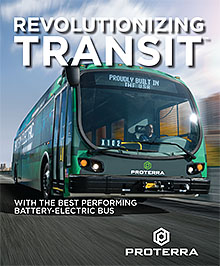HRT Goes Electric
HRT is Modernizing with Advanced EV Technology
Hampton Roads Transit is operating six all electric, zero-emission buses along one of Virginia’s busiest routes. The advanced vehicles are unique in HRT’s history, and offer an insight into the possible future of public bus transportation.
The buses can be found along Virginia Beach Boulevard which serves the Downtown Norfolk Transit Center and the Virginia Beach Oceanfront. This is the Route 20, and it is divided into 22 blocks — think of them as a length of road — and at any given time it may require that many buses to meet the daily schedule demands, so not all Route 20 buses will be electric. You can expect to see diesel ones in use as well.
The buses are just starting revenue service, but HRT Operations continues to evaluate their performance under some of the most demanding conditions in the region: stopping and starting, with the air conditioning or the heat on, doors opening and closing, accelerating, and stopping, carrying dozens of passengers. The idea is to see how well the batteries hold up under normal operating conditions, and how best to fit the bus into the route demands.
Recharging stations were installed at HRT’s 18th Street maintenance shop. We selected our Norfolk facility because it was the only one that could accommodate the power needs of the buses.
The Proterra Catalyst was built from the ground up to be electric, with the best acceleration, greatest horsepower, and the most range of any battery-electric bus in its class. The body of the Catalyst is made of an advanced carbon-fiber-reinforced composite material, making it extremely durable, non-conductive, and lightweight.
The innovative design of the Catalyst® vehicle enables us to have the most battery capacity on board for maximum range. The purpose-built design also allows for the best placement of battery packs, underneath and outside of the passenger compartment and creating a lower center of gravity for the greatest stability and safety.
The Catalyst is powered by Proterra batteries, which are designed from the cell-level up for heavy-duty transit usage, and have a rugged housing to withstand harsh environments.
CO2 Tailpipe Emission
REDUCTION
NO TAILPIPE
HRT is helping clear the air with zero-emission electric buses
Air pollution contributes to respiratory issues such as asthma and pneumonia, putting people at greater risk of health issues. Transportation is one of the leading sources of air pollution, and public transit plays a vital role in reducing emissions from transportation. The Federal Transit Administration estimates that the average transit system emits about half the CO2 per passenger mile compared with a single-occupancy private vehicle.
Energy Cost
REDUCTION
VS. DIESEL BUS
Better rider experience
HRT’s battery buses help reduce its carbon footprint because they displace 230,000 pounds of CO2 per year for each diesel bus replaced (which is like planting 5,000 trees). With zero-emission vehicles, HRT is contributing to cleaner air and a healthier community.
Based on average annual electricity consumption for a U.S. residential utility customer (source: U.S.Energy Information Administration)
 Proterra Catalyst® Brochure
Proterra Catalyst® Brochure